Supported Web Form Flow Type
- Single Step- Creates static and non-interactive web forms.
- New interactive- The first web form initiates a new interactive session, which is used in subsequent workflow steps, including the use of at least one additional web form within that session.
- Existing Interactive- Creates a web form either by a previous web form step or the web form trigger
New Web Form - Single Step
The New Web Form action with a Single Step web form flow type, allows you to create static, non-interactive web forms that gather information from users without initiating an interactive session. These forms are ideal for straightforward data collection that do not require ongoing interaction. The builder must manually share the form’s URL through communication channels such as email or Slack. Once the form is submitted, the associated workflow proceeds automatically, simplifying the process for both users and builders.How to Create a Workflow using the Single Step Web Form Action
1
Create a new workflow by navigating to the Workflow Editor
Navigate to the Workflow Editor
2
In the action panel
Create a step by searching “Web Form” in the search bar and select the “New Web Form” action.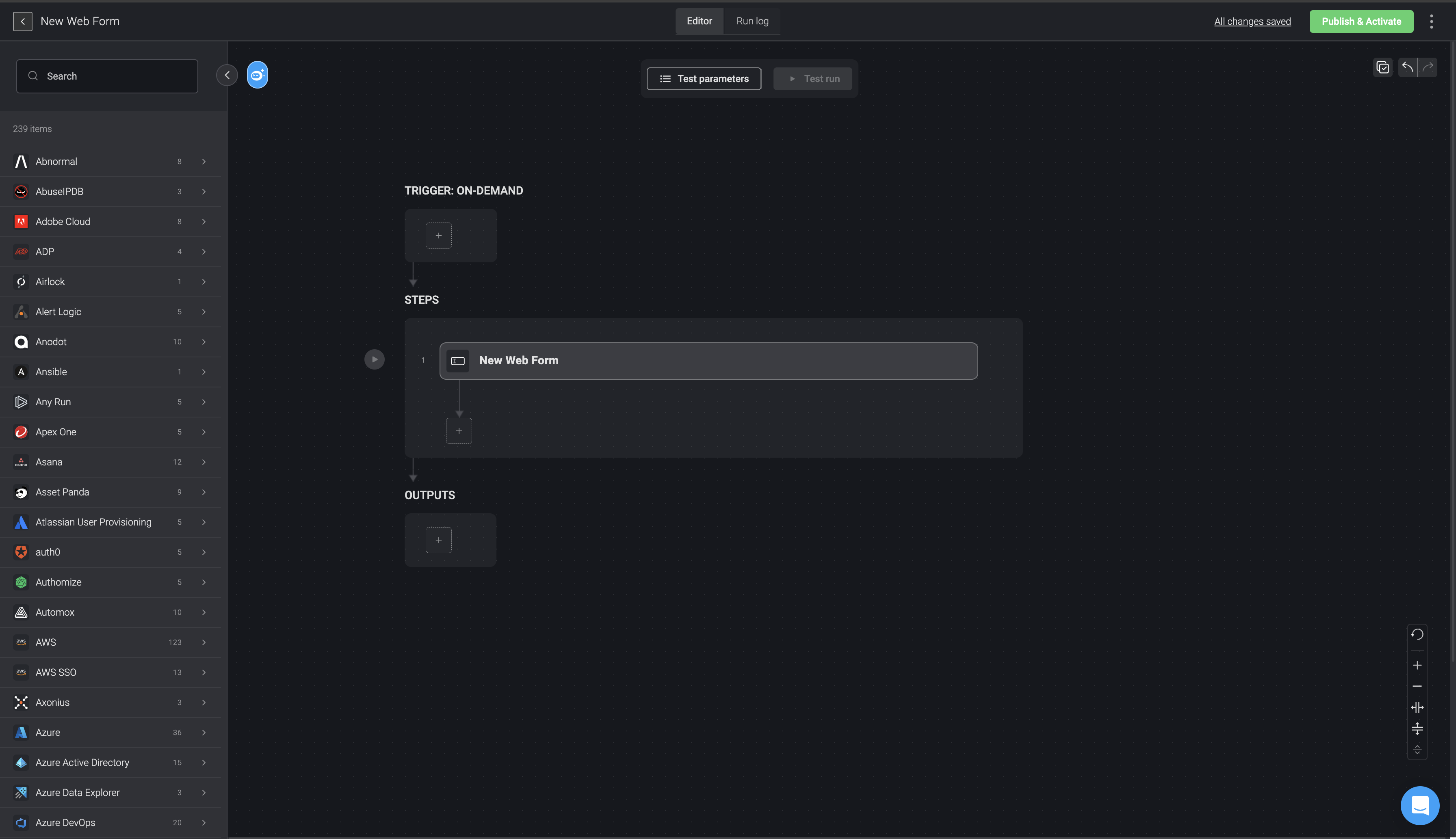

3
Set Web Form Flow Type as: Single Step
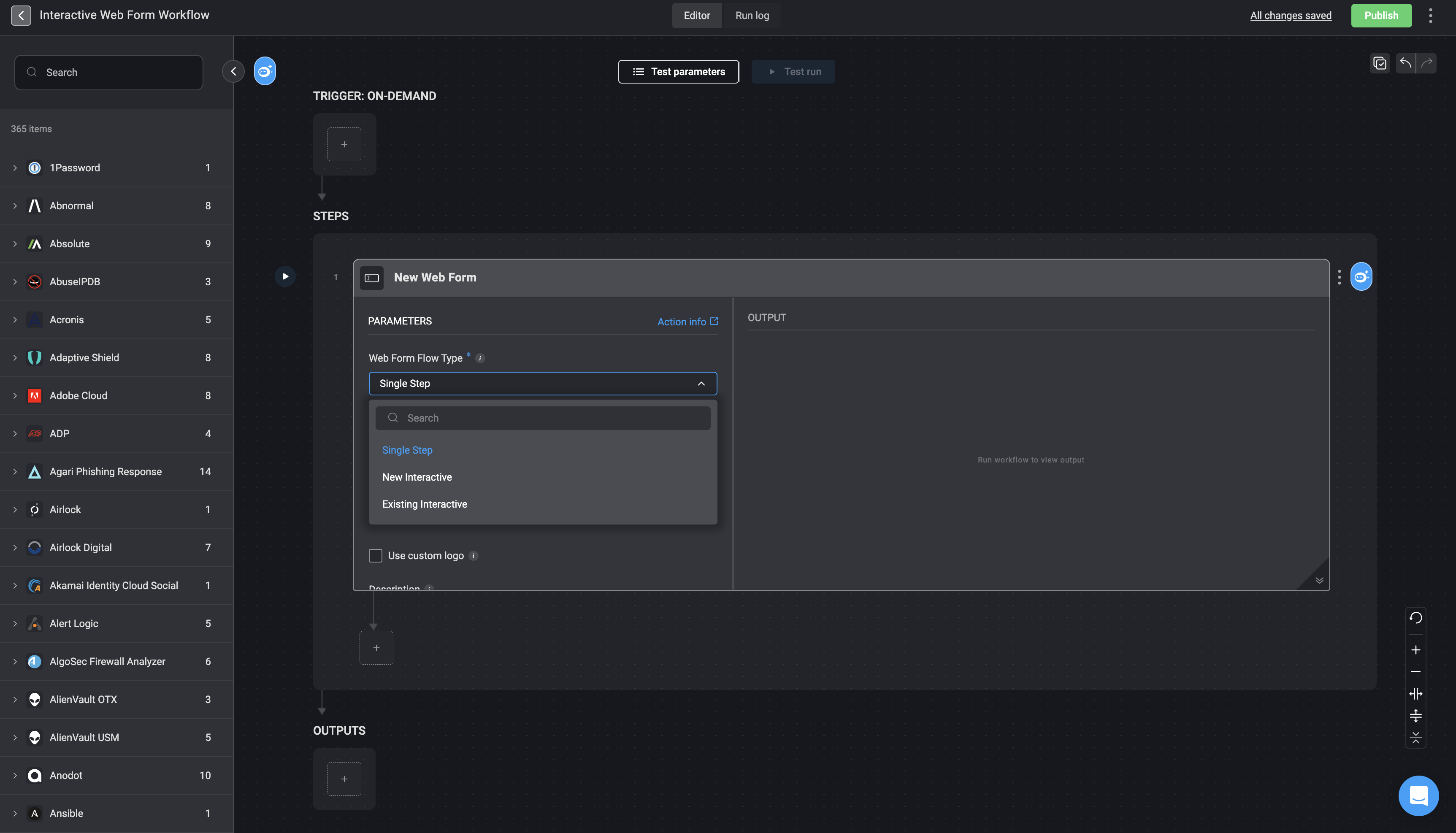
4
Complete the additional fields:
- URL Link: Copy the link provided.
- Header: Add a title for your web form.
- Logo: (Optional) Check the box to include a custom logo and provide the image URL.
- Description: (Optional) Add a brief description.
- Input Fields: Select and add the required fields.
- Button Text: Enter the text you want displayed on the form’s submit button.
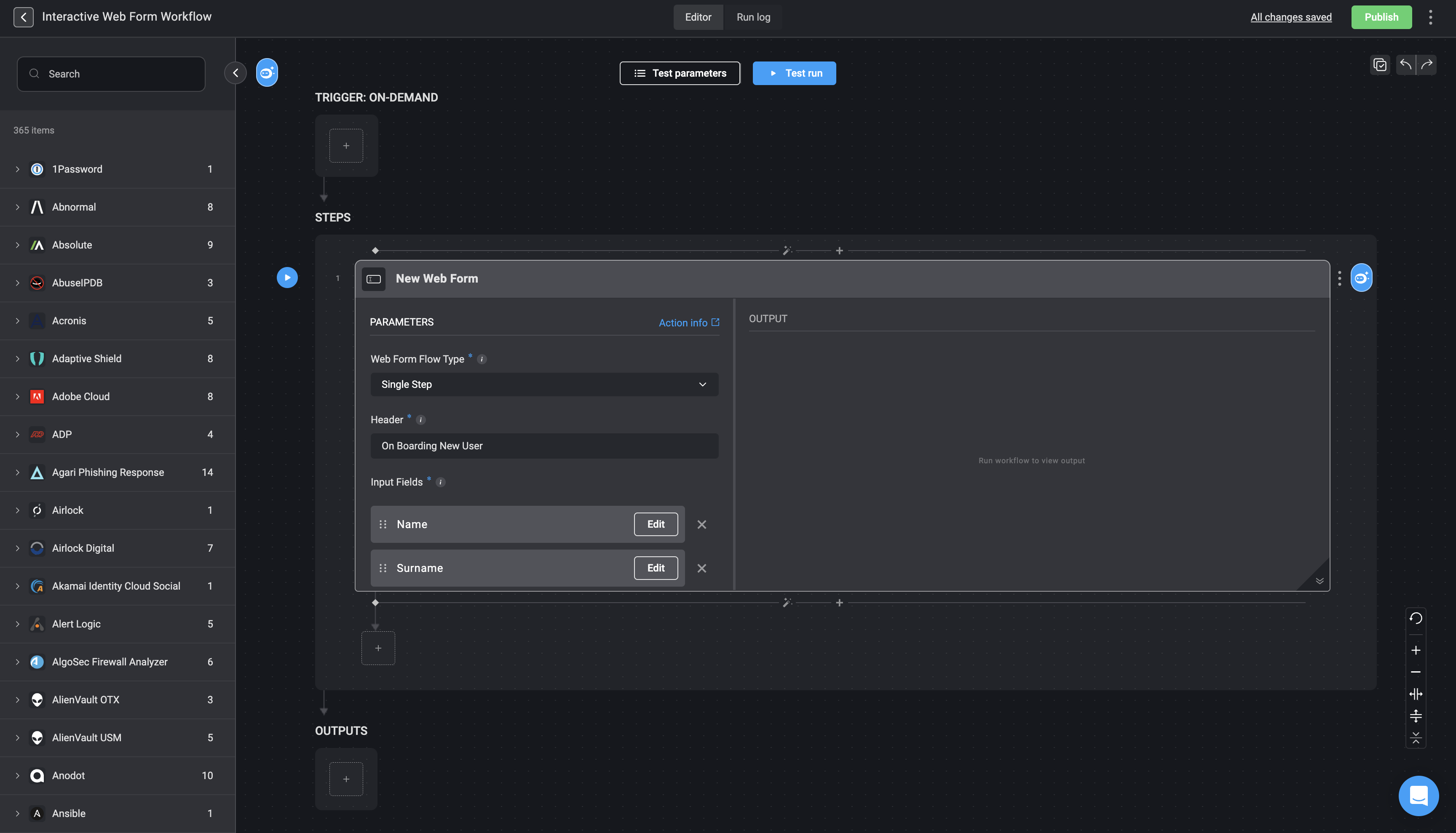
5
Add an Interactive Action
Next, add an action to the next step, to send the web form’s generated URL to a specific user. For example, an Email action or a Slack action. Use the variable picker to select 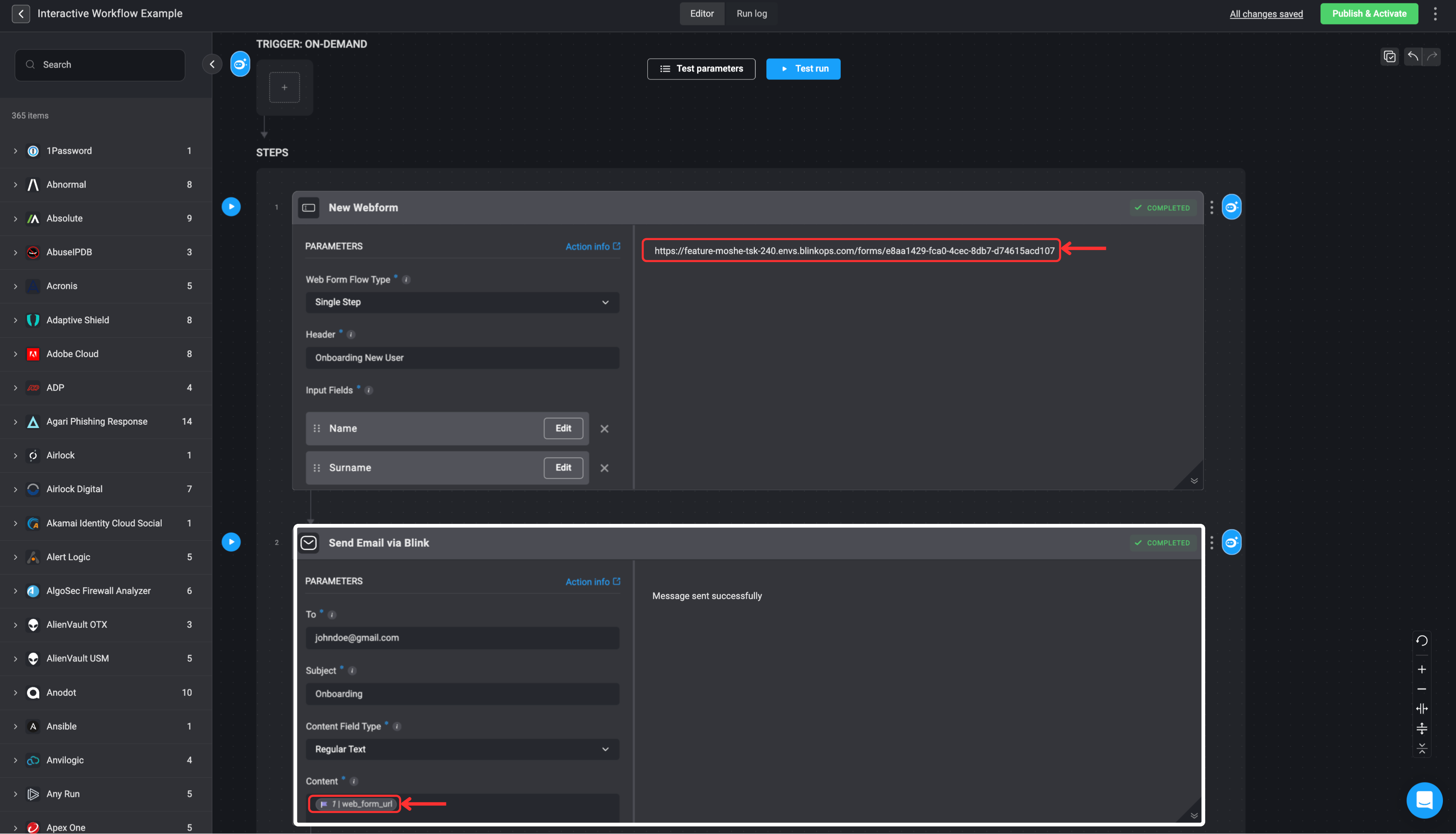
step.1 and then select the webform_form_url dynamic variable option. Since the web form is generated dynamically on a dynamic URL, it is required to include a step to share it via Slack, Email, or another communication channel.
6
Add the Wait action
Add a Wait action to the subsequent step to pause the workflow until the user completes and submits the web form. Select theWait for: Web Form Response option from the dropdown menu.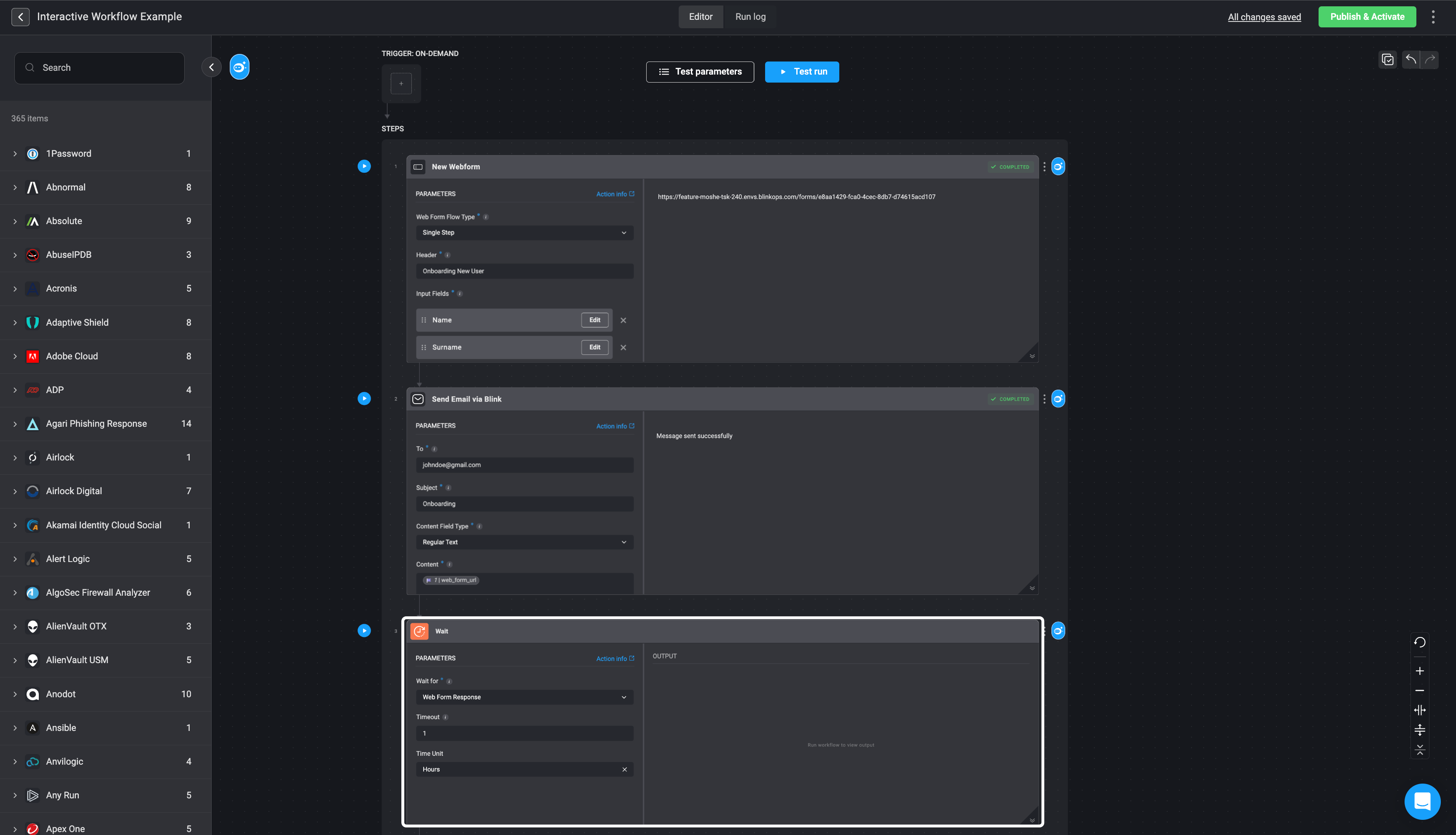
It is crucial to include a Wait action immediately after the step that sends the web form’s generated URL to the user. This ensures the workflow pauses and waits for the user’s response before continuing with subsequent steps or completing the workflow execution. If a Wait step is not added, the steps designed to handle the user’s response to the web form will fail, as the workflow will proceed without waiting for the necessary input.

7
Build out the rest of your workflow
Then publish/activate the workflow when ready
New Web Form - Interactive Web Form
The Interactive Web Form capability empowers you to design and build user-driven workflows involving multiple user interactions that are interdependent. By enabling interactive web forms that adapt based on user input, this feature facilitates seamless data collection and decision-making processes. It is ideal for scenarios where user inputs drive subsequent steps in the workflow, allowing for flexible and efficient management of complex workflows.How to Create a Workflow using the Interactive Web Form Actions
Web Form Flow Type: New Interactive- This flow creates a new interactive session for use with subsequent workflow steps including at least one more web form for that session.- Create a new workflow by navigating to the Workflow Editor.
-
Create a step by searching “Web Form” in the search bar and select the “New Web Form” action.

-
Set Web Form Flow Type as ‘New Interactive’.
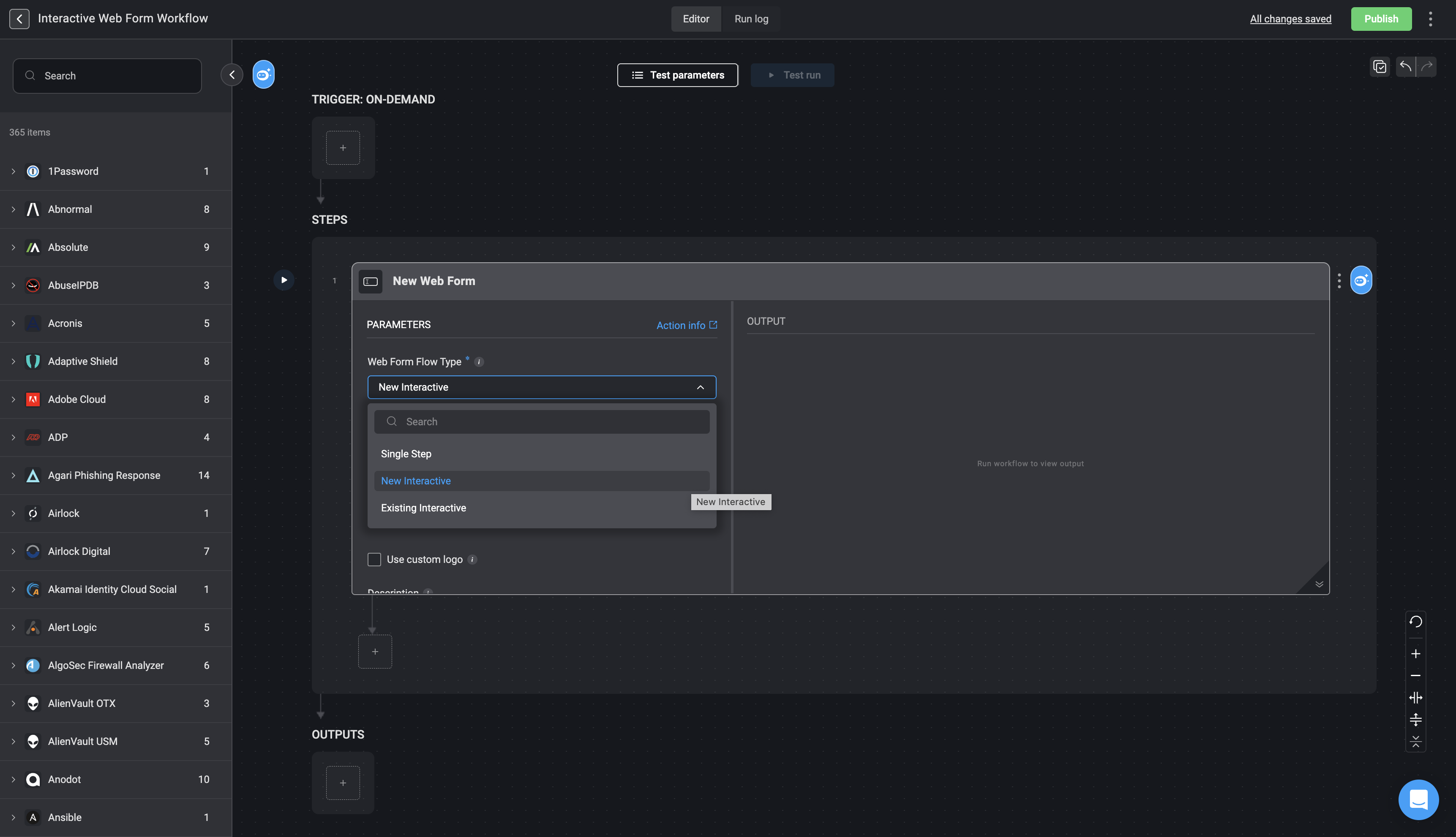
-
Complete the additional following fields:
- URL Link: Copy the link provided.
- Header: Add a title for your web form.
- Logo: (Optional) Check the box to include a custom logo and provide the image URL.
- Description: (Optional) Add a brief description.
- Input Fields: Select and add the required fields.
- Button Text: Enter the text you want displayed on the form’s submit button.

-
Next, add an action to the next step, to send the web form’s generated URL to a specific user. For example, an Email action or a Slack action. Use the variable picker to select
step.1and then select thewebform_form_urldynamic variable option.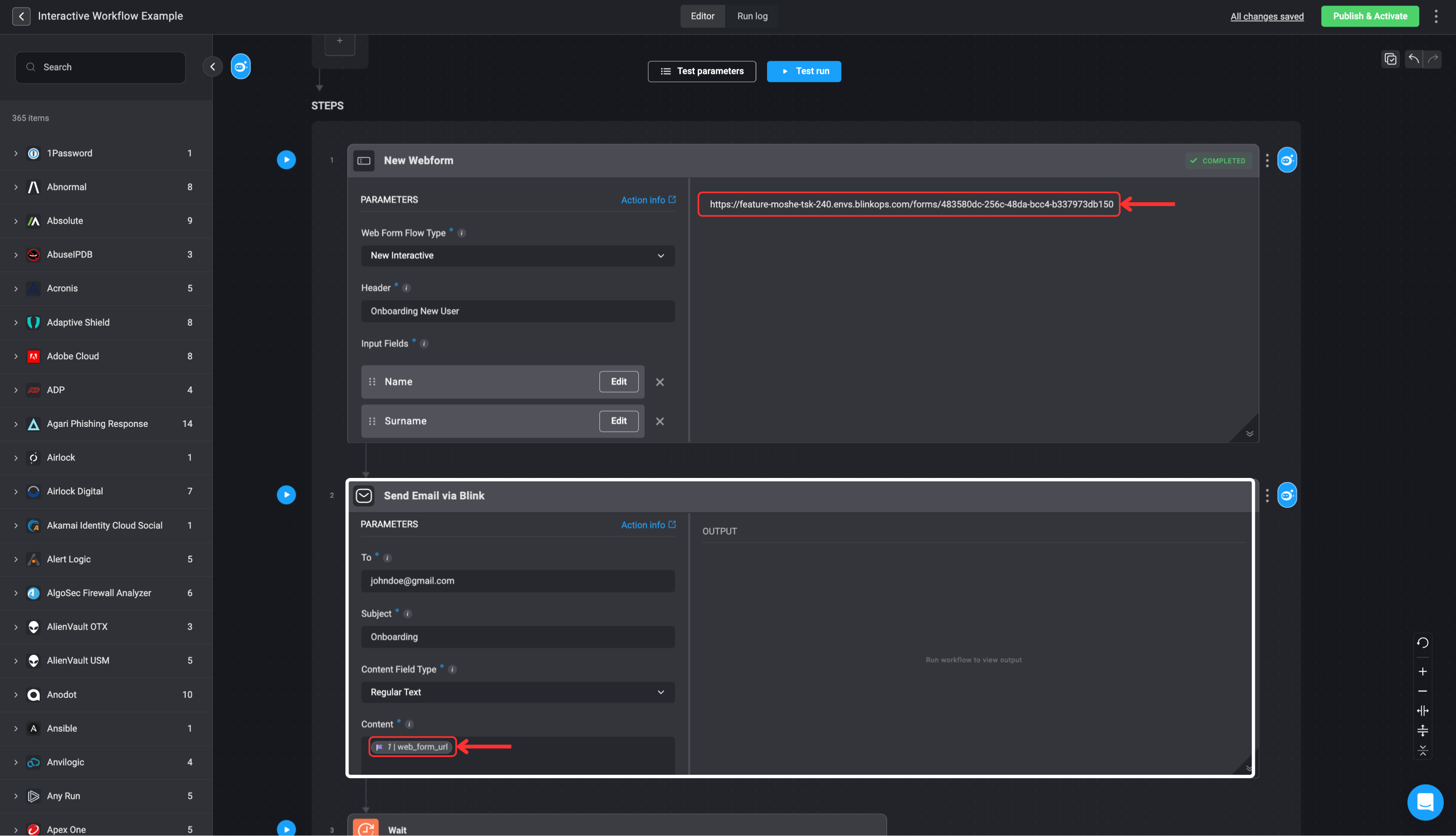
-
Add a Wait action to the subsequent step to pause the workflow until the user completes and submits the web form. Select theWait for: Web Form Response option from the dropdown menu.
It is crucial to include a Wait action immediately after the step that sends the web form’s generated URL to the user. This ensures the workflow pauses and waits for the user’s response before continuing with subsequent steps or completing the workflow execution. If a Wait step is not added, the steps designed to handle the user’s response to the web form will fail, as the workflow will proceed without waiting for the necessary input.
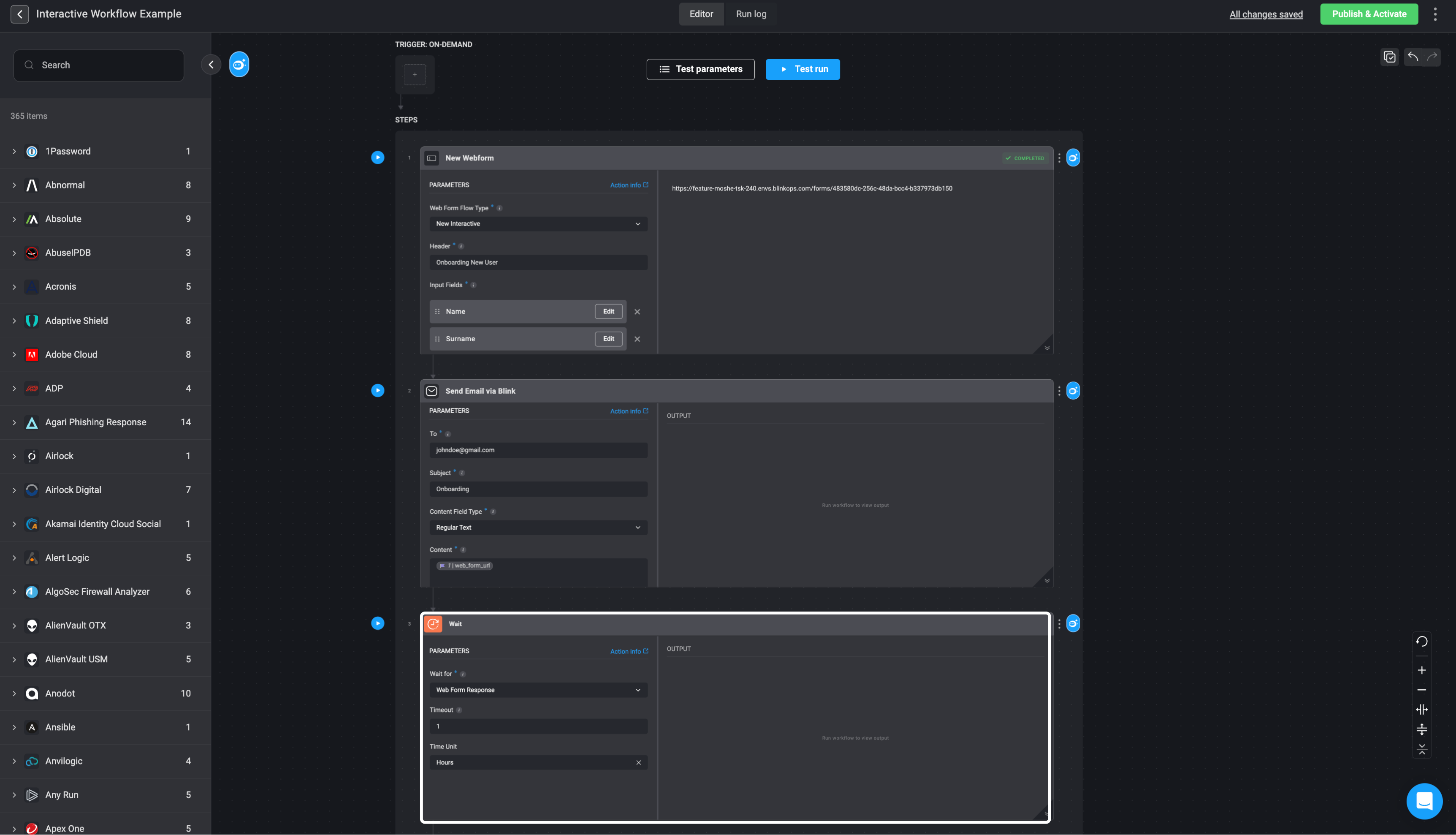
-
Build out the rest of your workflow by incorporating additional Interactive Web Form steps. You can apply any desired logic between these web form steps to customize the workflow process.
-
Add ‘New Web Form’ step
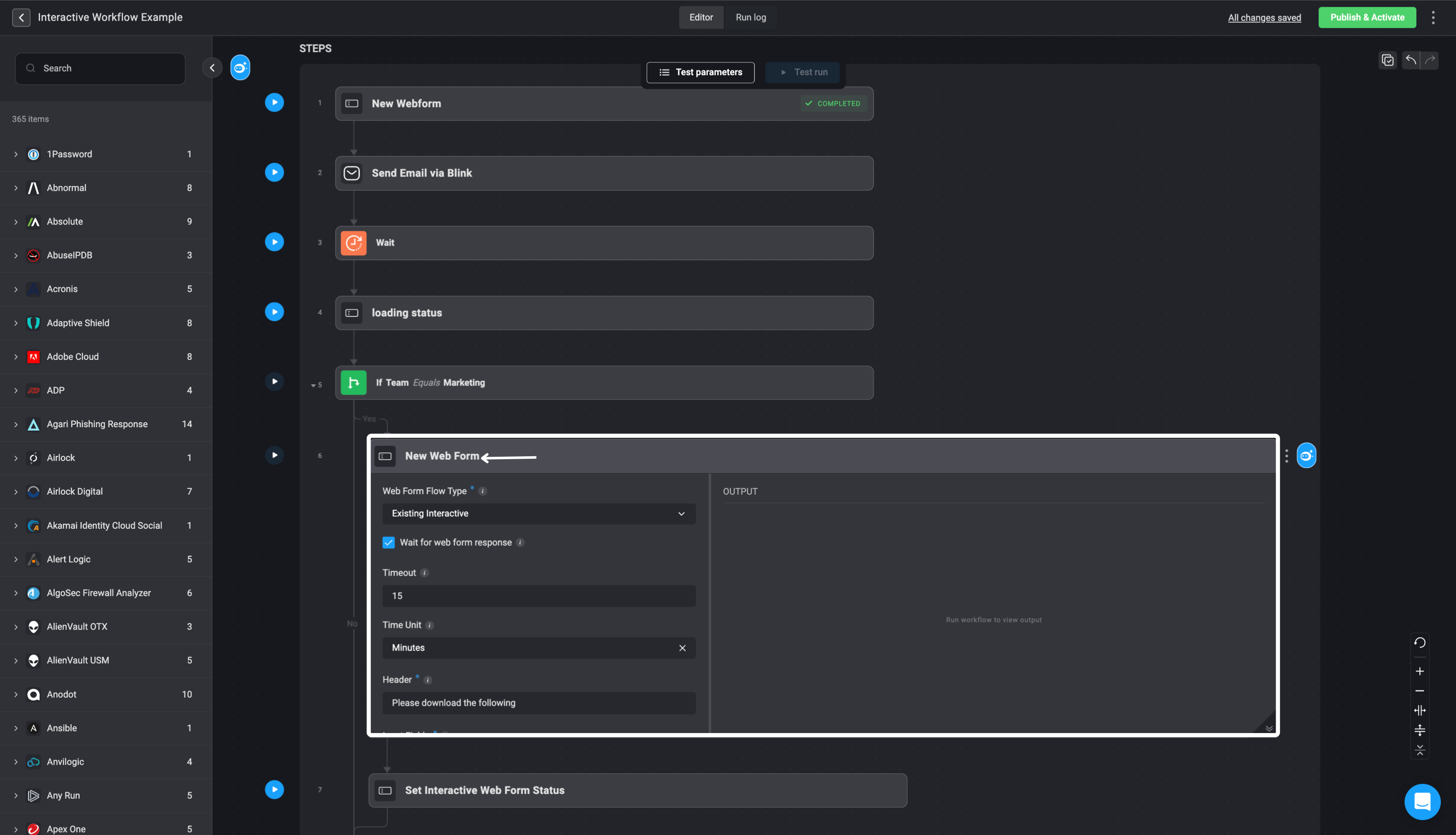
- Set Web Form Flow Type as ‘Existing Interactive’. This flow type creates a web form that can be used in an interactive web form session initiated either by a previous web form step or the web form trigger.
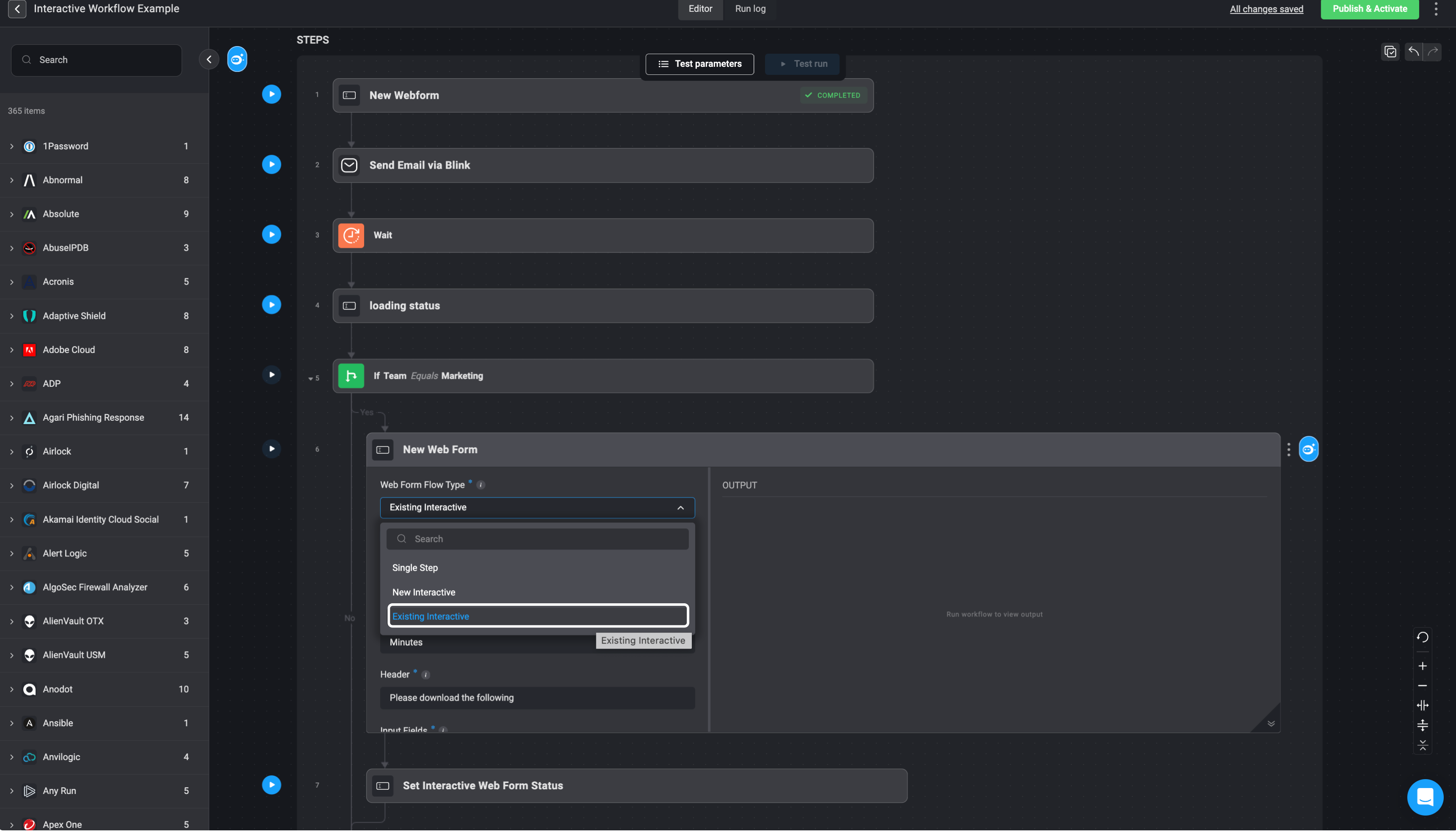
- To force the step wait for the web form response, select the ‘Wait for web form response’ checkbox. Alternatively, you can add a subsequent ‘wait’ step, to wait for the web form response.
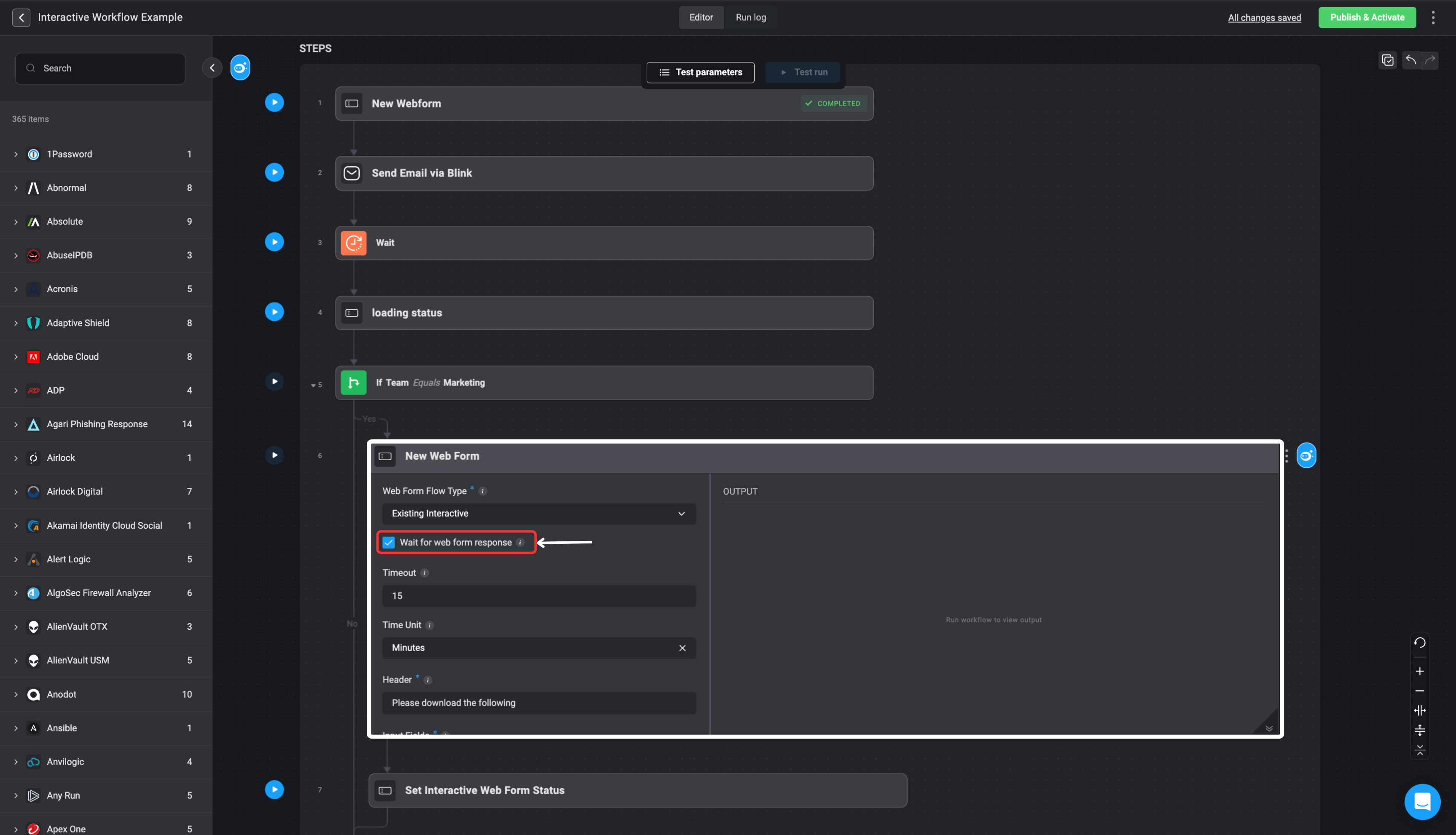
-
Add ‘New Web Form’ step
-
Once a web form is submitted, a default ‘processing’ status is displayed to indicate that the input is being handled. If the workflow includes additional forms, the next form in the sequence will be shown. Upon submission of the final form, a default success or failure message is displayed based on the outcome of the workflow’s response processing.
You can customize the status response See the Set Interactive Web Form Status section below for more information.
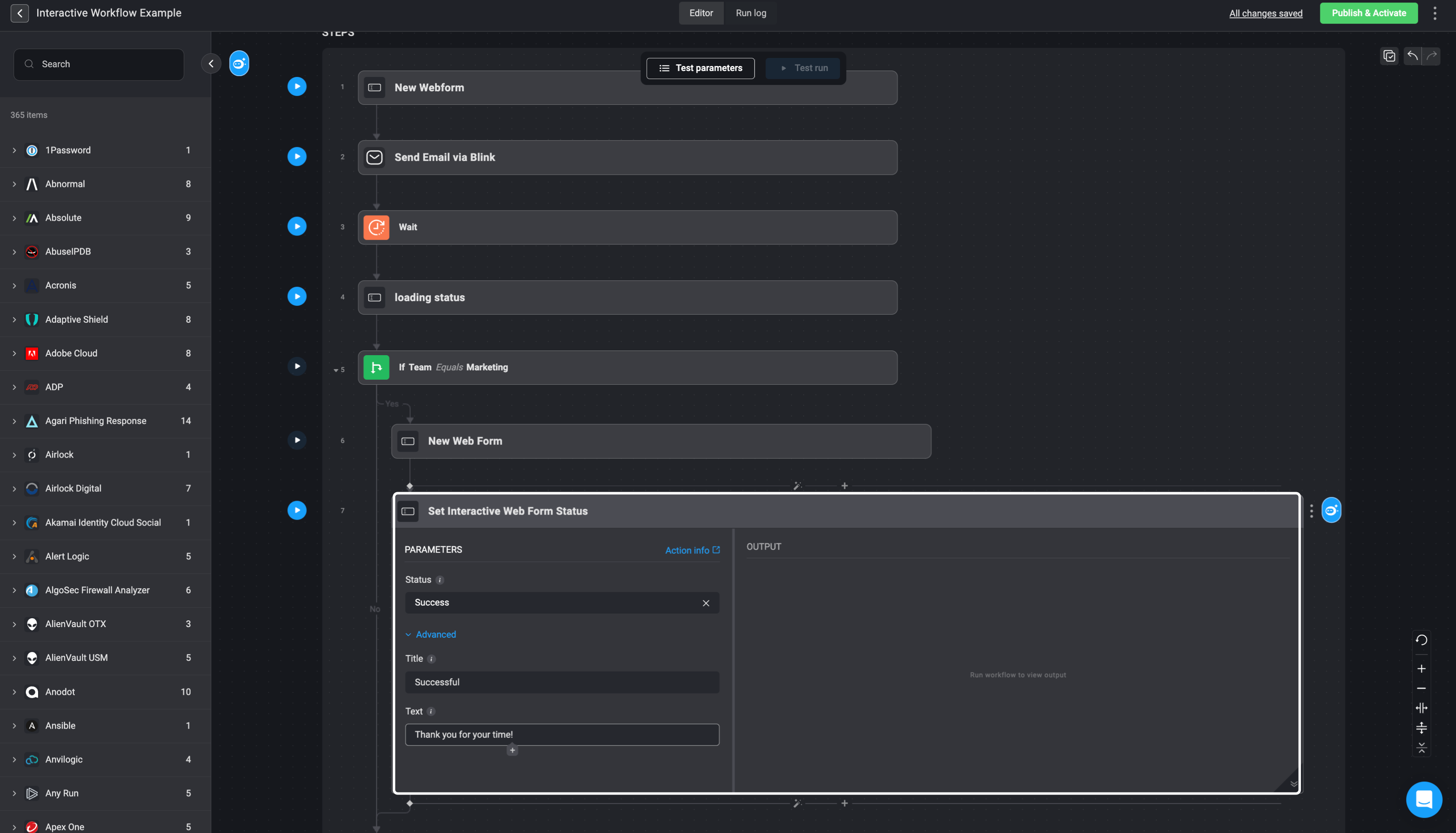
Set Interactive Web Form Status
If the workflow includes Interactive Web Form steps, you have the option to set custom statuses that provide feedback to the user about the progress of the flow. While using custom statuses is optional, they can enhance the user experience by offering clear updates. If no custom statuses are provided, the workflow will automatically update the status of the interactive web form flow upon completion.Please note that statuses cannot be set for a Single Step Web Form. The Set Interactive Web Form Status actions are exclusively designed for Interactive Web Forms.

- Select the status:
- Loading: Indicates that the process is still in progress.
- Terminal Statuses (Success, Timeout, or Failure): Selecting one of these statuses will mark the interactive web form flow as complete and close the session.
- Customize the Title and Message:
- Provide a custom title and message to be displayed to the user. If you leave this field blank, the default title and message for the selected status will be displayed.
- The custom title and message may include dynamic variables
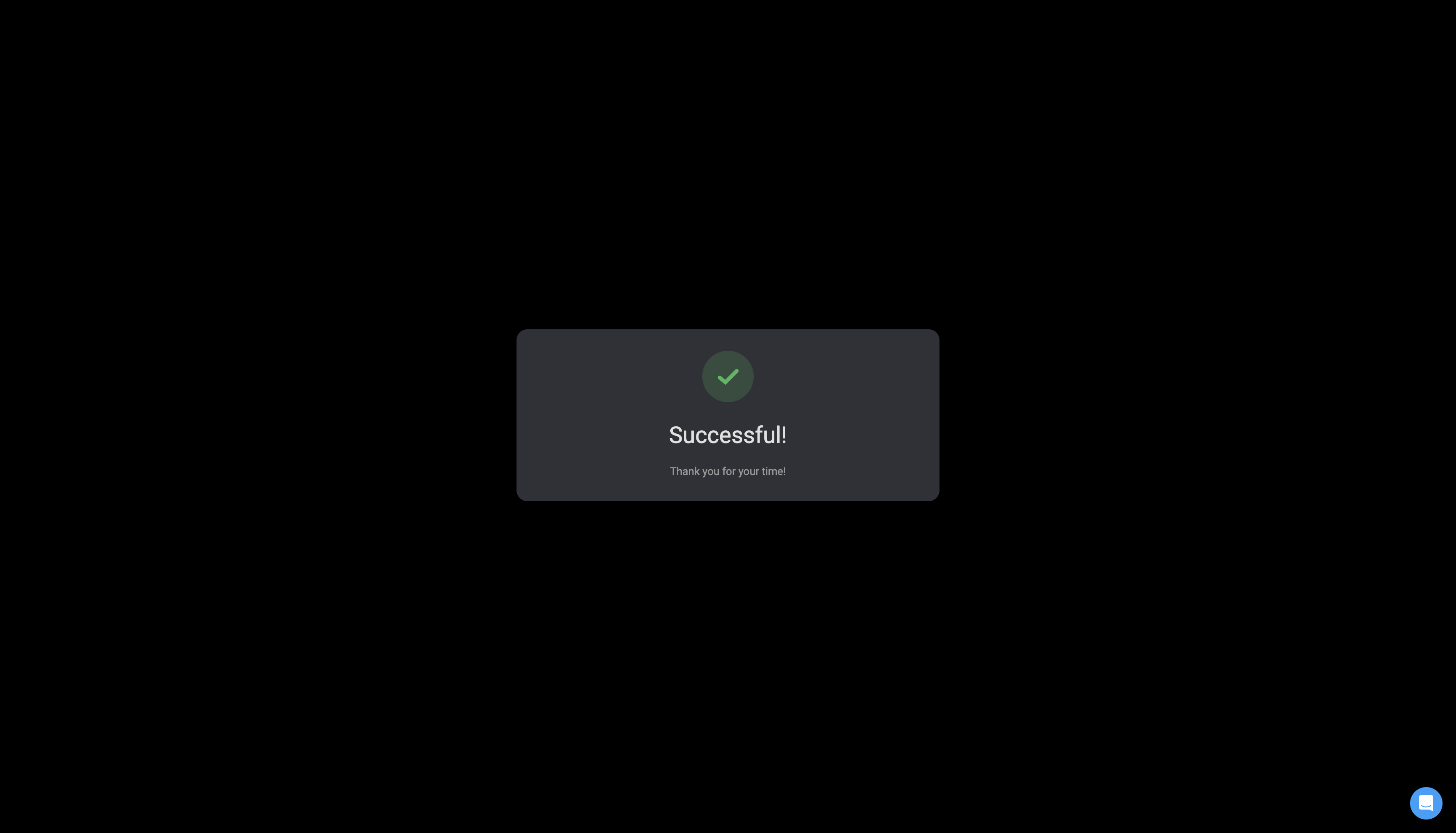
New Web Form from JSON
This action allows you to create a Web Form using a JSON Schema.It is important to note:
- The New Web Form from JSON action allows you to create non-interactive web forms that gather information from users without initiating an interactive session
- If you do not want to include the key-value pair in your Web Form, set the value to and empty string or an empty array if it requires options.
- Keep in mind that even though certain parameters like options_type, free_text_regex, filtering_field, and enforce_connection_types are always set to either an empty string ("") or null, they still need to be included in the JSON schema for the Web Form actions to work properly. This inclusion is necessary for the actions to execute smoothly, even though these parameters aren’t actively used.
| Parameter | Data Type | Description |
|---|---|---|
| label | Text | The Labels for the fields on the form. |
| required | Boolean | Set to True if the form field is required to be filled out, and set to False if it is optional. |
| type | Input Types | Text, Number, Date&Time, MultiSelect, SingleSelect and Checkbox |
| default | Boolean | Sets to True to set the value as the default value or false to set it as the default value |
| placeholder | String | Temporary text displayed within an empty input field to indicate the type of information that should be entered |
| options | Array | Labels for the options you want to include in the MultiSelect menu. |
| display_name | String | Generates a new label name for the field on the form by overriding the default label. |
| allow_free_text | Boolean | Set to True if you want to allow free text in dropdown menus or false to not allow it. |
| index | Number | The index is used to determine the order in which you want to arrange your form fields. |
| options_type | Empty String | Always set it as an empty string: "". |
| free_text_regex | Empty String | Always set it as an empty string: "". |
| filtering_field | Empty String | Always set it as an empty string: "". |
| enforce_connection_types | null | Always set it as null. |